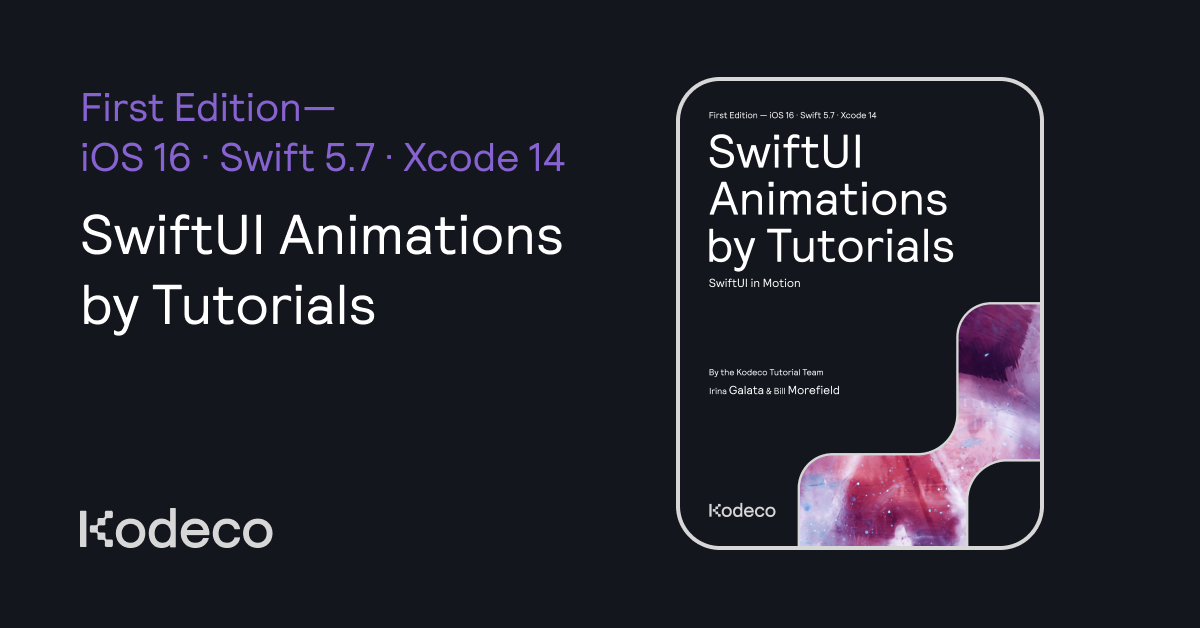This chapter provides an introduction to animation in SwiftUI through building an app that lets the user experiment with the different basic animations and compares how different parameters affect those animations.
In this chapter, you’ll learn about explicit and implicit animations in SwiftUI and how to use interpolation functions to change their behavior.
Learn how to enhance your components by animating their appearance or disappearance, using either built-in or custom transitions tailored to your requirements.
While going through this chapter, you’ll learn how to build a complex custom component by drawing it line-by-line and animating it with SwiftUI.
In this chapter, you’ll learn to apply matrice transformations to SwiftUI’s `Shape`. Once all the components are ready, you’ll enable users to interact with them via different kinds of gestures, like rotating or zooming.
This chapter starts with animating a view in the traditional SwiftUI manner and then explores how to create animations in situations where SwiftUI can’t do the work for you.
In this chapter, you’ll look at combining separate transitions and animations into a single animation. You’ll also look at animating a view based on multiple property changes.
In this chapter, you’ll explore `TimelineView`, which creates views that update based on a schedule instead of state changes. You’ll then combine this with the `Canvas` view to create an analog timer animation.
You’ll build a visual animation combining SwiftUI views and SceneKit animation showing liquid pouring into a view that fills up.
In this chapter, you’ll craft a well-known Apple UI component – the Honeycomb apps grid! You’ll learn the basics of hexagonal grids and apply some math to precisely recreate the look and feel of the component.
Source link

Leave a Reply